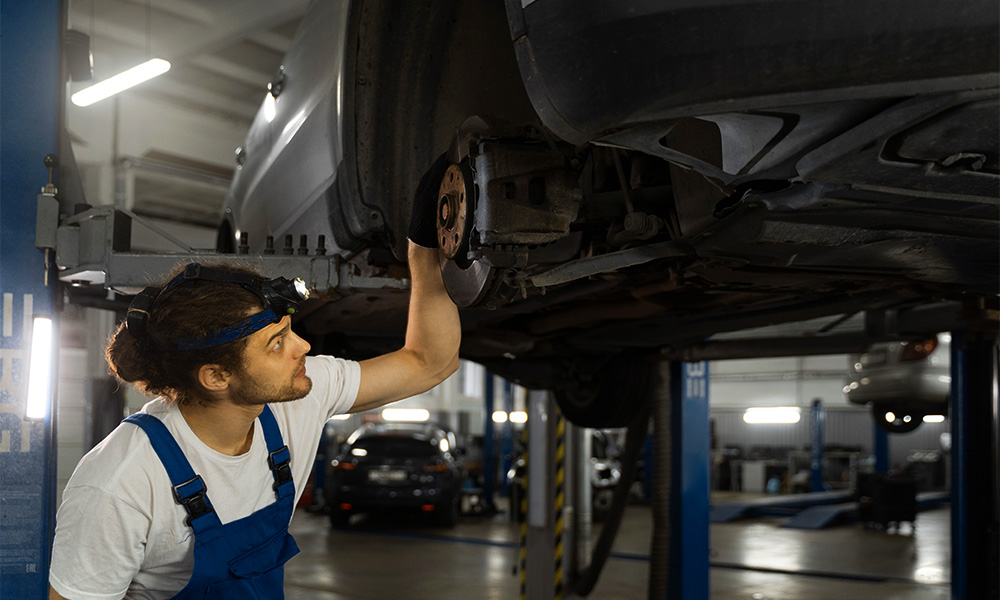When your vehicle starts pulling to one side or your tires show uneven wear patterns, getting a professional wheel alignment becomes essential. Many drivers wonder how long does an alignment take before scheduling this important maintenance service. The answer depends on several factors, but most standard alignments can be completed within one to two hours.
Understanding the time investment required for wheel alignment helps you plan your day accordingly and ensures your vehicle receives the proper care it needs for optimal performance and tire longevity.
Understanding Different Types of Wheel Alignments
Two-Wheel Alignment Duration
A two-wheel alignment targets only the front wheels of your car, making adjustments to their positioning and angles. This service usually takes 30 to 60 minutes. During the process, the toe, camber, and caster angles of the front wheels are changed to match the manufacturer’s guidelines.
Most mechanics can perform a two-wheel alignment relatively quickly since they only need to work on half of the vehicle’s wheels. However, the actual duration may vary depending on the severity of the misalignment and the specific adjustments needed.
Four-Wheel Alignment Time Requirements
A full four-wheel alignment checks all four wheels of your car and takes more time and careful work. This service usually takes between 60 to 90 minutes, though some complex cases may extend up to two hours.
Four-wheel alignments are necessary for vehicles with adjustable rear suspension systems and provide the most accurate alignment possible. The additional time investment ensures that all wheels work together harmoniously, resulting in optimal vehicle handling and tire performance.
Factors That Affect Alignment Duration
Vehicle Condition and Suspension Components
The general state of your car’s suspension system greatly affects how long the alignment process takes. If technicians discover worn or damaged components during the initial inspection, replacement parts may be necessary before proceeding with the alignment. This can add a few more hours to the total time needed for the service.
Common issues that extend alignment duration include:
- Worn ball joints or tie rod ends
- Damaged suspension bushings
- Bent steering components
- Excessive play in steering linkages
Severity of Misalignment
Vehicles with minor alignment issues typically require less time to correct than those with severe misalignment problems. If your car has been in an accident or has significant wear patterns, the technician may need additional time to make proper adjustments and ensure everything meets specifications.
Vehicle Type and Complexity
Different vehicle types require varying amounts of time for proper alignment. Standard passenger cars and sedans typically align faster than trucks, SUVs, or performance vehicles. Luxury vehicles and sports cars often have more sophisticated suspension systems that require additional time and expertise to align correctly.
What Happens During the Alignment Process
Initial Inspection and Setup
Before starting the alignment service, technicians examine your car’s tires, suspension parts, and steering mechanisms for any issues. Technicians check for any visible damage or heavy wear that might impact how well the alignment works. This inspection phase typically takes 10 to 15 minutes.
After completing the initial check, your car gets placed onto the alignment equipment where precision sensors are mounted on all wheels. This preparation phase guarantees precise readings during the entire alignment service.
Measurement and Adjustment Phase
Modern alignment equipment provides precise measurements of your vehicle’s current alignment angles. Technicians compare these readings to manufacturer specifications and make necessary adjustments to bring everything within proper tolerances.
The adjustment phase involves fine-tuning various suspension components to achieve optimal wheel positioning. This process requires patience and precision, as small adjustments can significantly impact vehicle performance and tire wear patterns.

Scheduling and Wait Time Considerations
Shop Scheduling and Availability
While the actual alignment service may take one to two hours, scheduling considerations can affect your total time commitment. Popular alignment shops may have longer wait times, especially during busy periods or seasonal tire changes.
Calling ahead to schedule an appointment ensures you receive prompt service and minimizes your waiting time. Many shops also offer the option to drop off your vehicle if you cannot wait during the service.
Additional Services and Inspections
Some alignment services include complementary inspections of related components, such as tire rotation or pressure checks. While these additional services add value, they may also extend the total time your vehicle spends in the shop.
Discussing your specific needs and time constraints with the service advisor helps ensure realistic expectations and proper scheduling.
Signs You Need Immediate Alignment Service
Tire Wear Patterns and Vehicle Handling
Uneven tire wear, vehicle pulling to one side, or steering wheel vibration all indicate alignment issues that require prompt attention. These symptoms often worsen over time, so addressing them quickly can prevent more extensive and expensive repairs.
Regular alignment maintenance helps extend tire life, improve fuel efficiency, and maintain optimal vehicle safety and performance.
Conclusion
Understanding how long an alignment takes helps you make informed decisions about vehicle maintenance scheduling. Most standard alignments require between one to two hours, depending on the type of service needed and your vehicle’s condition. While this time investment may seem significant, proper wheel alignment provides substantial benefits including extended tire life, improved fuel economy, and enhanced vehicle safety. Planning ahead and choosing a reputable service provider ensures your alignment service is completed efficiently and effectively, keeping your vehicle running smoothly for miles to come.



